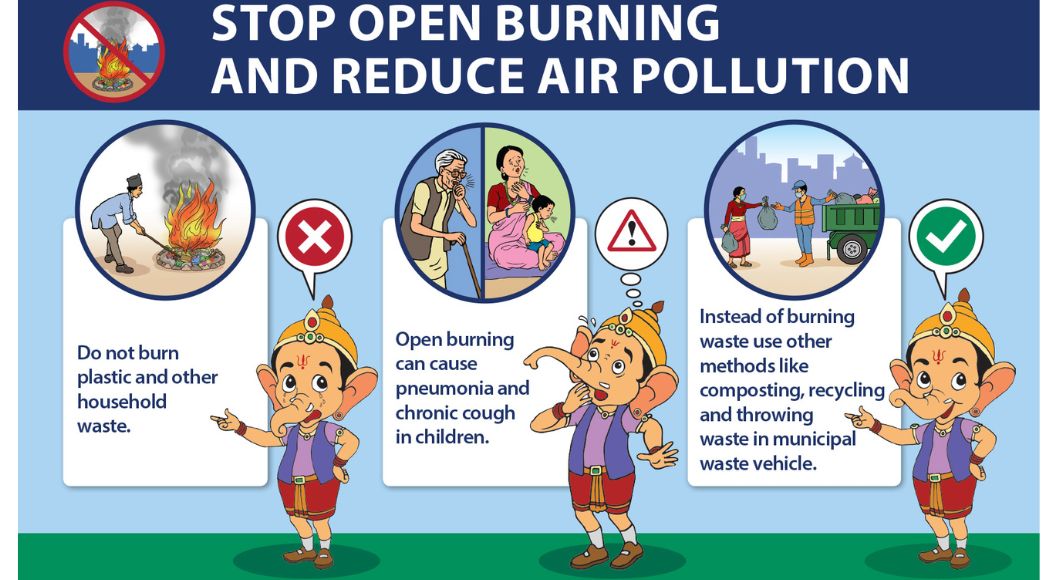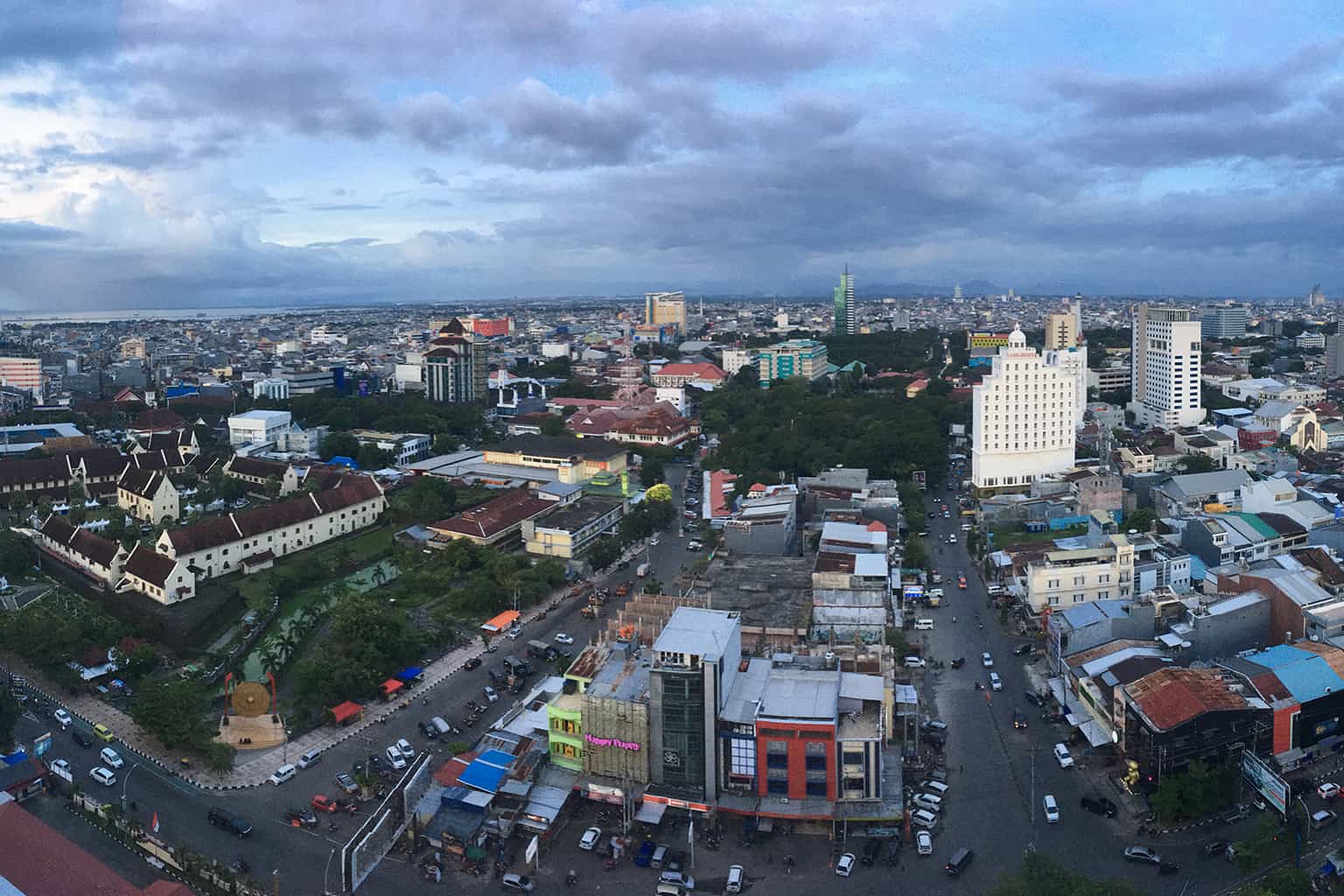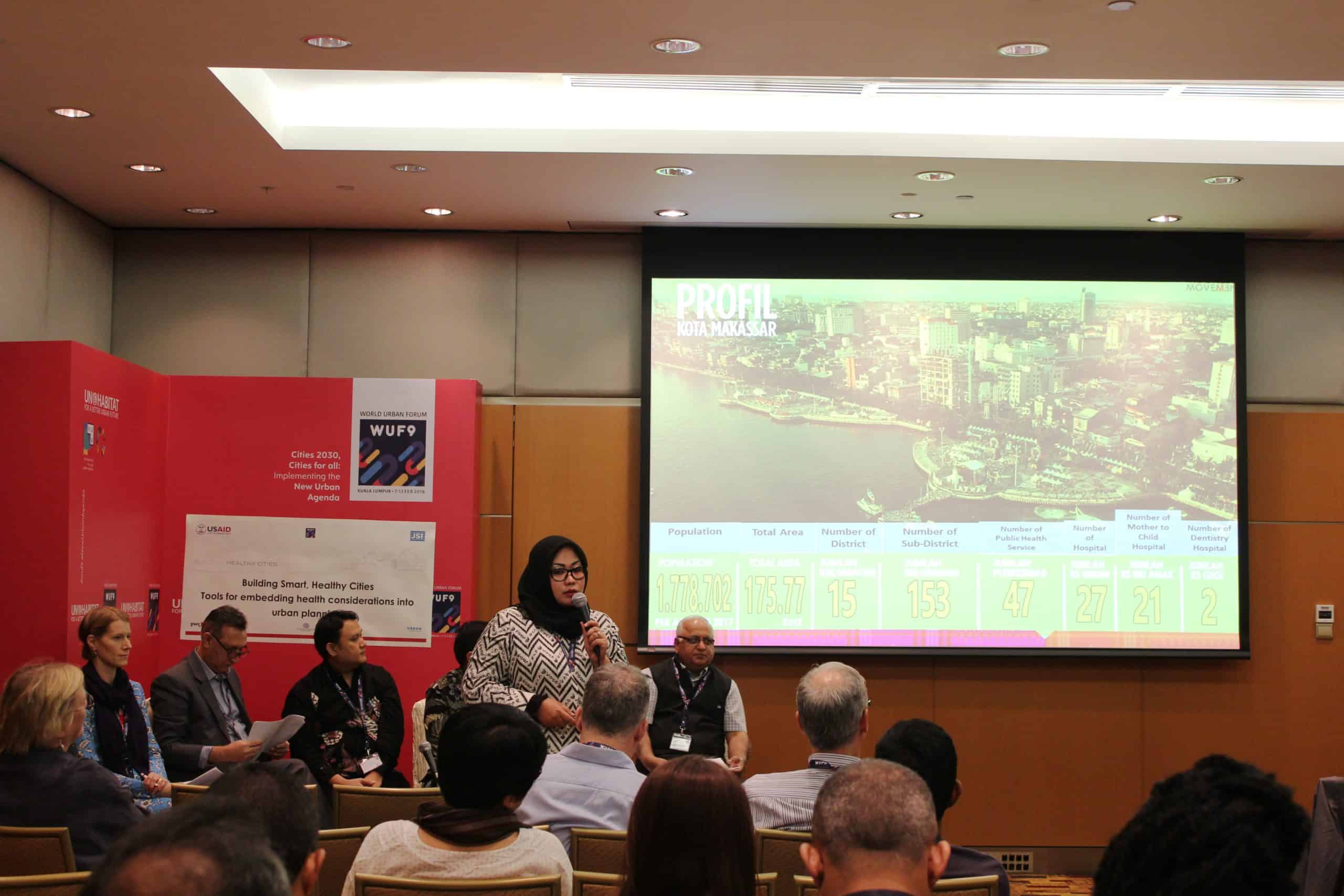In Kathmandu, Nepal, the Building Healthy Cities (BHC) project worked with the Smart City program and the USAID Kathmandu Mission and other multisectoral stakeholders to prioritize, plan, and fund urban health activities. Activities focused on reducing air pollution and developing local support for the Kathmandu Valley Air Quality Action Plan (KVAP). BHC’s work in Kathmandu was guided by multisectoral collaboration, including use of a participatory systems mapping process to understand the urban context that affects health outcomes. BHC developed a Systems Map (available in English and Nepali), an accompanying Leverage Map, and a short video tutorial. This process is an excellent way to find high impact interventions within complex, dynamic contexts.
The one-year implementation timeline was ambitious, and BHC was stymied by several political and COVID-related external shocks. Despite these challenges, the BHC Kathmandu team completed a communications campaign to reduce open-air burning, including a flip book, posters, and a short video. The final KVAP municipal implementation plan will be finalized early in 2022. BHC also created a web of stakeholder connections at the municipal level that the next USAID project will maintain.
The BHC team held two closing events. The first, with stakeholders and the general public, was held on September 29, 2021. The second, a debrief presentation with the USAID Mission, was on September 30. BHC’s experience in Kathmandu provides valuable lessons about rapid implementation and adapting existing multisector policies.
Visit the main BHC project page and YouTube Playlist to learn more about activities in Da Nang, Vietnam; Indore, India; Kathmandu, Nepal; and Makassar, Indonesia.
BHC is a five-year cooperative agreement funded by the United States Agency for International Development under Agreement No. AID-OAA-A-17-00028, beginning September 30, 2017. BHC is implemented by JSI Research & Training Institute, Inc. with partners International Organization for Migration, Thrive Networks Global, and Urban Institute, and with support from Engaging Inquiry, LLC.





